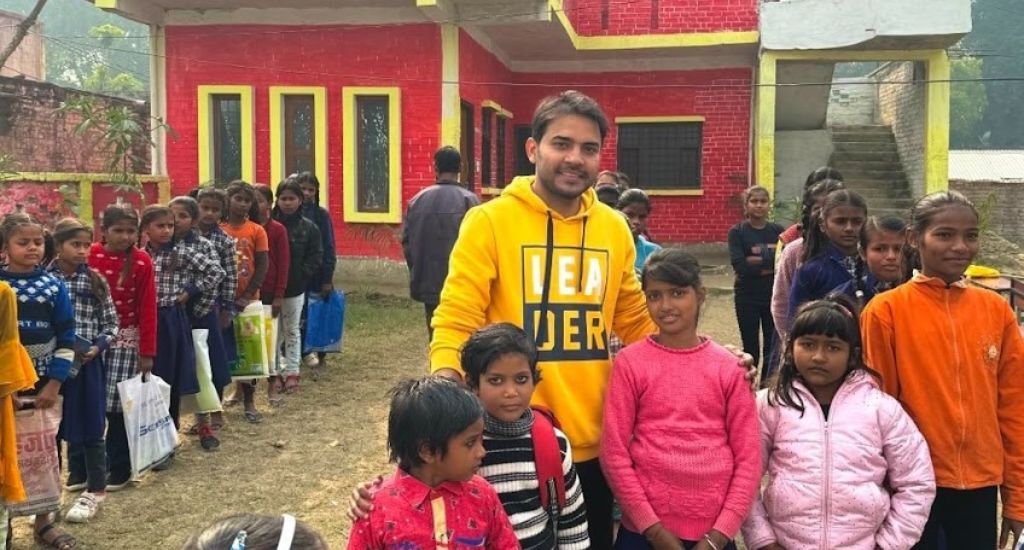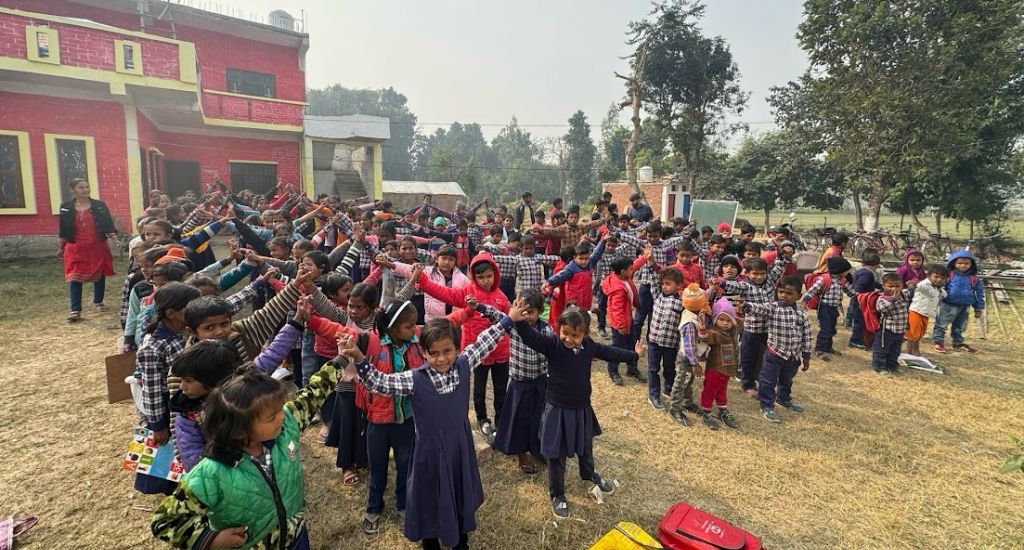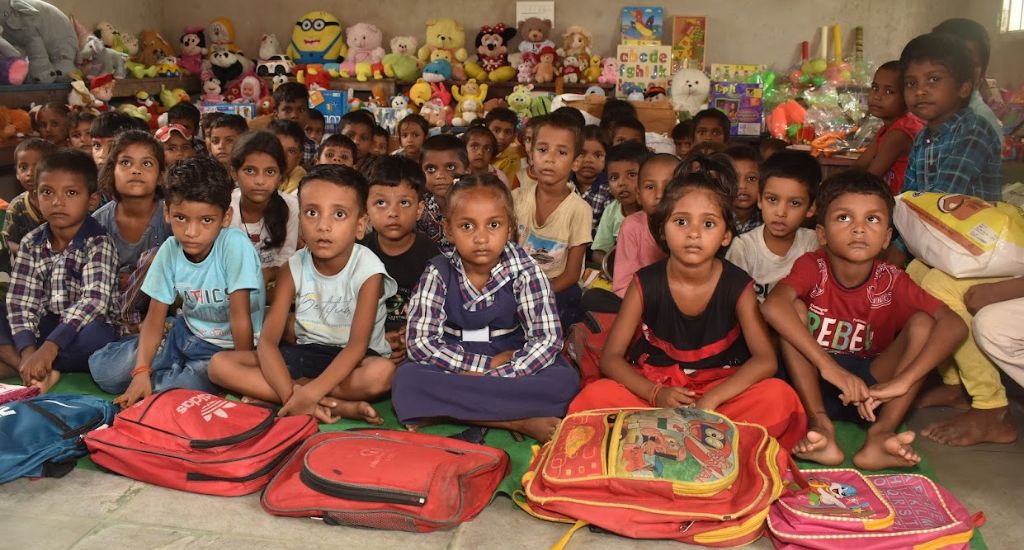After many years, I set foot in my village, deep in rural Uttar Pradesh’s Gonda district. It was December in 2021 – India was in the throes of a COVID-induced lockdown. As I walked around, I realised that I needed to act and fast.
What I saw was deeply concerning – the state of education in the village was alarmingly low. The quality of education and educational infrastructure was in dire condition, with a severe lack of resources such as benches and electricity. There was also a shortage of teachers, particularly qualified ones, and a general lack of awareness about the importance of education in the region.
Despite the obstacles, the progress we have made is immensely rewarding. Many children who previously did not attend school now come regularly, and I believe their families deeply appreciate the changes in their lives.

For instance, the nearest school and computer training center are approximately 10-12 kilometers away from the village, making it difficult for rural families to access due to low income and lack of employment opportunities.
Also read: Patwa Toli: Bihar’s IIT hotbed
Being the change you want to see in the world
After discussing these shortcomings with the villagers, I realised that under such circumstances, it was nearly impossible for students to receive even a basic education. This sparked a determination within me – I knew I had to do something to improve rural education.
As an IT professional with experience working in the United States, I analysed the best way to start and sustain an initiative. I decided that establishing a formal structure would allow me to seek support from individuals and organisations in the future. With this in mind, I registered an NGO to give my efforts a proper foundation.
Fortunately, I had an empty piece of land in my village. So I used it to establish a full-time education centre that now serves around 300 rural children.

I started with two teachers and built two classrooms. Soon it became more than just a project – it turned into my passion and my dream. I envisioned creating a world-class rural education center that offered students the same facilities as those available in private schools in cities. When something becomes a passion, financial concerns take a back seat, and I committed myself wholeheartedly to this cause.
Highs and lows
As the education centre grew, the response from students and parents was overwhelmingly positive. However, this success also brought challenges. Local private schools and tuition centres began lodging complaints with the education department, alleging that we were running an unauthorised school without proper affiliation. The pressure to sustain the centre became immense, particularly because I had moved to the U.S. by then.
So I invested a lot of resources into meeting government requirements, convincing officials that we were not operating illegally, and ensuring that all students remained registered with government schools.

For two years, I poured most of my personal funds into sustaining the centre and working toward obtaining affiliation. Despite encountering numerous bureaucratic hurdles and constantly facing new infrastructure demands, I have continued to build step by step.
Also read: Sukma’s educational renaissance
Success Stories
Despite the obstacles, the progress we have made is immensely rewarding. Many children who previously did not attend school now come regularly, and I believe their families deeply appreciate the changes in their lives. Female teachers who once had no professional opportunities are now contributing meaningfully, and their parents express their gratitude to us.
Some parents who have financial struggles and who once saw education as unattainable now witness the transformation firsthand. The increased awareness around education has led more families to seek guidance on shaping their children’s futures. These moments, filled with heartfelt appreciation, are the real success stories of our journey.
Reading, writing, tech and girl power
Given my IT background, I know the importance of digital education. So a year after launching the centre, I set up a computer lab equipped with 10 computers, eight tablets, and a projector. These tools have been integrated into the academic curriculum, ensuring that students gain hands-on experience with technology, a crucial skill in today’s world.

Recognising the need to empower young girls, we regularly showcase videos of influential leaders to inspire them. Additionally, we play awareness videos for their mothers, helping them envision brighter futures for their daughters and encouraging them to prioritise education.
The best part about this journey is that it has inspired the love of learning and a longing to progress in my hometown – and beyond.
Also read: Education comes to a community ridiculed as rat-eaters
Manav Sharma is a 35-year-old IT professional and the founder of the Atulya Vikas Foundation.
The lead image on top shows the bright young students of the school run by the Atulya Vikas Foundation. (Photo by Deepak Rajput)








